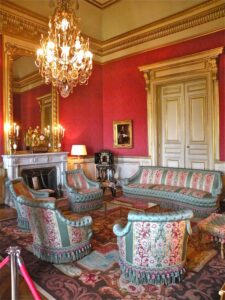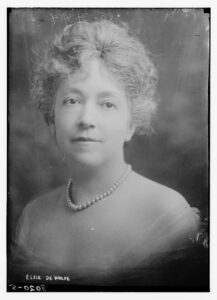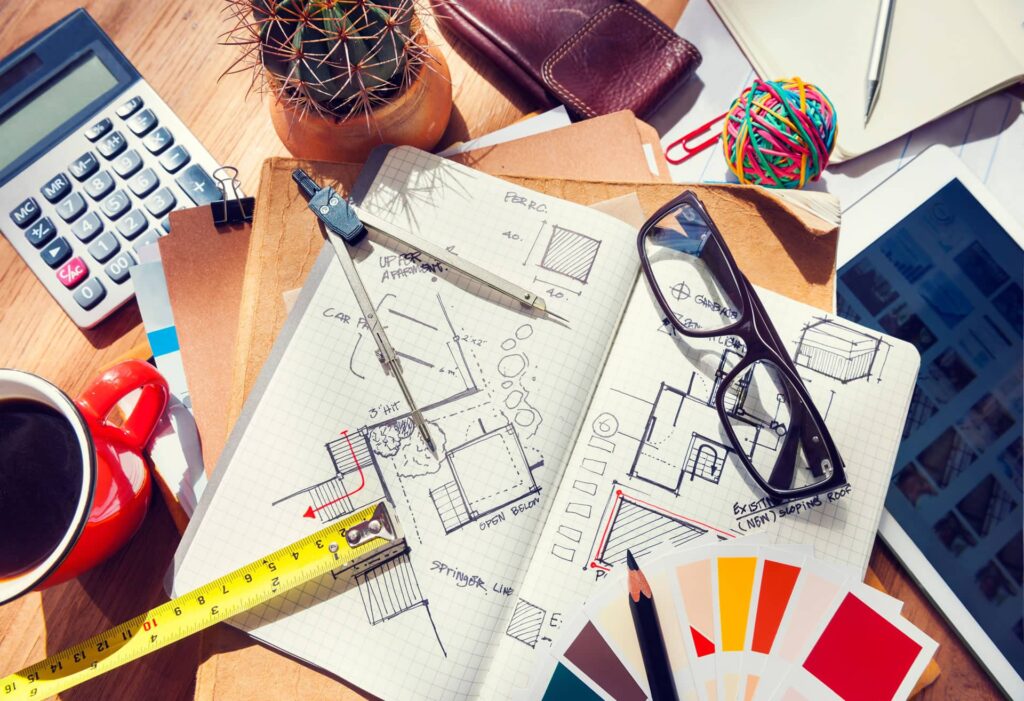Hello, I’m Myriam, the founder of Alna Design, the first online school for interior decoration and interior design that offers all its courses for free.
In this article, I’ve decided to shed light on the difference between an interior decorator and an interior designer, as the boundary is often unclear for people who want to become a professional in space design.
Here are the two points I’ll cover today:
- A bit of history: because it’s not possible to understand the difference between an interior decorator and an interior designer without knowing the history of these professions.
- The differences in terms of job skills: to help you decide which direction to take if you want to become a space design professional.
A bit of history
First, you should know that the professions of interior decorator and interior designer are very recent.
The interior decorator

The term “interior decorator” only appeared in Europe in the mid-19th century. Its creation occurred in a context of strong industrial growth and the emergence of a new social class. This wealthy class became interested in interior decoration and sought to emulate the majestic decors of Napoleon III’s imperial court.
It was in this context of high demand for interior creation that the profession of interior decorator was born, in which a new generation of artisans specialized.
Their mission: to thoughtfully design the distribution of rooms, the interior atmosphere, the flow of spaces, as well as the arrangement of furniture and objects, to make it as elegant and practical as possible.
Of course, interior decoration existed before the mid-19th century, but interior creation was a job shared by architects, artisans, and artists.

The profession of interior decorator (also called interior creator) crossed the Atlantic at the beginning of the 20th century and reached the United States.
In the United States, Elsie de Wolfe is known as the first professional interior decorator. In France, it was Eugène Lami.
I will write an article about them and many other interior decorators and interior designers later, as it’s not possible to become a space design professional without knowing the work of those who have shaped hundreds of reference interiors for decades.
The interior Designer
The profession of Interior Designer is even more recent than that of interior decorator, as it only really appeared in the first half of the 20th century with the gradual abandonment of ornamentation in favor of mass production and the evolution of furniture use towards more utility and functionality.
More and more interior decorators-creators then took the name of interior designer and engaged in more technical additional training.
The term “interior designer” is also the result of the evolution of the names of leading magazines and associations in the interior decoration market from the 1930s onwards.
For example, the magazine “Interior Design and Decoration” started progressively to drop the term “decoration” from its publication.
Or the well-known association of the time “AID” (American Institute of Decorators) founded in 1931 changed its name to American Institute of Designers in 1936.
In summary: the interior designer was originally an interior decorator who deepened their technical knowledge, particularly in the design of plans and construction rules.
The differences in terms of job skills
As I just explained, the profession of interior designer is an evolution of the profession of interior decorator.
What exactly are the job skills?
The most important thing to remember: Even if some countries or states in the USA now allow interior designers to sign certain plans, these are only plans that concern non-load-bearing interior partitions.
All plans that involve changes that involve modifying or creating load-bearing structures must be signed by an architect or engineer and be in accordance with what is required in the building codes of each building as well as the city. Indeed, depending on the neighborhoods, especially in the USA, some modifications of non-load-bearing walls are not even allowed.
Whether you choose to become an interior decorator or interior designer, you will always have to call upon an architect, engineer, or licensed contractor in most cases.
In summary, the only difference between the interior decorator and the interior designer is that the latter has more in-depth technical knowledge than the former. But in practice and in most cases, they will always have to call upon a competent professional to validate the contractual aspects of their projects.
What to choose ?
Your choice to become an interior decorator or interior designer therefore depends on the projects you want to work on.
If you like making technical plans and working on advanced planning software in addition to decorative knowledge, choosing to become an interior designer seems more appropriate.
If you thrive on rethinking interior decoration and furniture arrangement, becoming an interior decorator is sufficient and less constraining.
And if you want to evolve later, it’s very simple, you can complement your training with more technical additional modules.
You will then be able to create plans and have them validated or modified if necessary by working in partnership with architects, contractors, and engineers. The doors are therefore not closed to take on more important projects as your career progresses.
Photo credit : © rawpixel, 123RF Free Images
What would you choose?
We’d love to hear your thoughts! Please take a moment to answer our quick survey : If you had to choose, would you prefer to become an interior decorator or an interior designer?
I’ll give you an example: When I bought my house in the South of France, it was in very bad condition, but it was mainly the size of the garden that interested me. For the decoration part, I did everything myself. For the technical part, I made the plans by hand and simply submitted them to an architect for validation. She validated more than 80% of my ideas and added her personal touch to the rest, which made the project even more interesting. You just need to do the same. Working as a team is, in my opinion, the key to success and it makes you even more credible to your future clients.

More from the blog
Nature Takes Center Stage in 2025 Decor
Read moreFeb
2025 Interior Design Trends
Read moreJan
Should you choose a certifying program when training in interior design or interior decoration?
Read moreNov